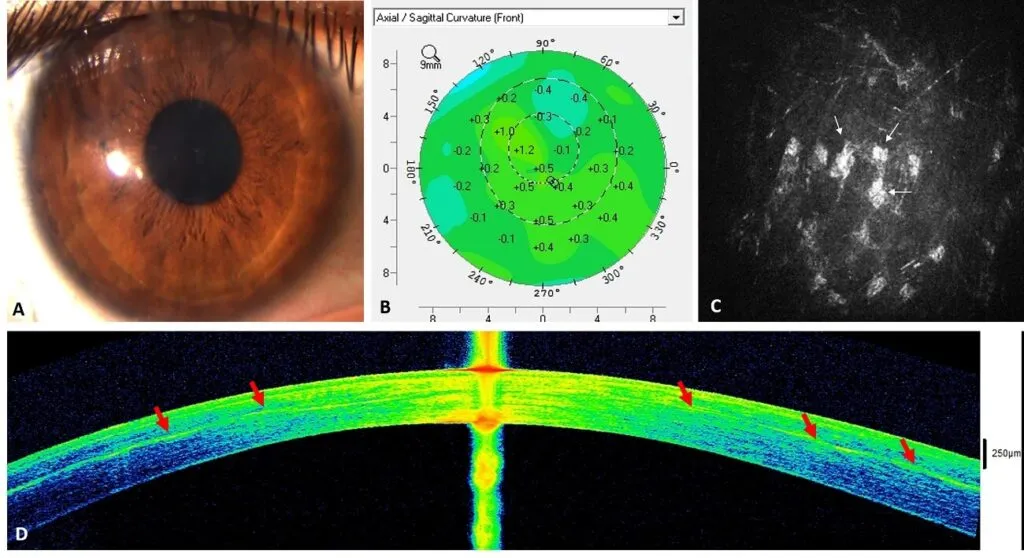Stem cell implants as a groundbreaking treatment for corneal dystrophy
Dr Jorge Alió leads the scientific project for this new technique, with the aim of avoiding corneal transplants in advanced cases of corneal dystrophy.

The Vissum Grupo Miranza clinic has successfully completed the first implant of stem cells from adipose tissue for the treatment of corneal dystrophy. The project was carried out by a multicentre group funded by the Carlos III Institute’s Health Research Fund and coordinated by Vissum Grupo Miranza. This is a scientific milestone after 14 years of experimental research, which has already been published in some of the most renowned scientific journals, such as Frontiers in Medicine.
Advanced corneal stroma cell therapy, a pioneering technique in Spain for the treatment of corneal dystrophies such as keratoconus, prevents corneal degeneration that in many cases leads to the need for a transplant, allowing tissue regeneration until the cells become keratocytes. Keratocytes are the cornea’s own cells that prevent the disease from progressing, substantially improving patients’ quality of life. “This allows us to biologically revitalise the cornea, stopping the disease without the need for surgery,” explains Dr Jorge Alió, a specialist at Grupo Miranza, who has led the project.
Keratoconus – the leading cause of corneal transplants in young patients
Keratoconus, the condition of the patient to whom this pioneering technique has been applied, is an eye disorder in which the central or paracentral area of the cornea gradually thins. Its usual spherical shape becomes conical, causing irregular astigmatism that distorts images, and a subsequent loss of vision. Keratoconus is the leading cause of corneal transplants in young patients. Its onset occurs at puberty, and most patients who suffer from it are in their 20s or 30s, with 73% of them being diagnosed before reaching the age of 24. Among the causes that trigger it, there is a genetic component, as it is hereditary in 10% of cases. It is also associated with trauma, injuries, allergies or continuous rubbing of the eyes.

Alternative therapy to corneal transplantation
In relation to the technique used, Dr Alió points out that “it is an alternative therapy to corneal transplantation that seeks to regenerate the stroma. Thus, stem cells do not generate immunological rejection, as they avoid the risks associated with the transplant surgery, as well as the whole postoperative process.”
According to Dr Alió, this pioneering technique has “very broad experimental support” and has previously been the subject of the “international study Cellular Therapy With Human Autologous Adipose-Derived Adult Stem Cells for Advanced Keratoconus, published in the most important international ophthalmology journals, which shows how these cells not only recover the cornea safely and effectively, but also provide it with better transparency when there are opacities.”